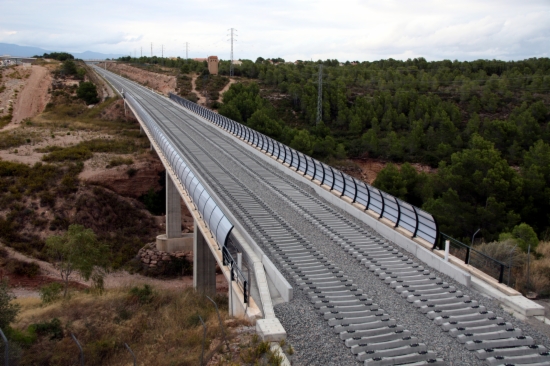19.06.2018 - 07:48
|
Actualització: 19.06.2018 - 09:48
After years of being on the backburner, the Mediterranean Corridor is beginning to make headway in Catalonia. A key axis in a project aimed at facilitating the transport of goods and people between various member states on the continent, today it was announced that the route will reach Tarragona, south Catalonia, from Castelló, north of València, by the year 2020. This, according to the Spanish secretary of infrastructure, Julió Gómez-Pomar.
Delayed project
The Mediterranean part of the project thus far has been marred by setbacks and delays. Despite this, Gómez-Pomar asserted that internationalizing the existing railway line from Castelló to Tarragona is not a “complex” issue. Despite this, it has been a recurrent topic over recent years.
It would be the first high-speed railway that does not pass through Madrid, and this has also been a point of debate. The Spanish government also asked for money from the EU to create a central corridor, as well as the Mediterranean Corridor, that would pass through Madrid, Zaragoza, and the Pyrenees. Some Catalan parties argued that this was too centralist, and asked for a more decentralised high-speed railway network.
The first high-speed railway in Spain was created in 1992 between Madrid and Seville. Sixteen years later, Barcelona, the second biggest city in Spain as a whole, got its own high-speed connection, thus prompting criticism in the time it took to expand its railway connections.
Slow travel
The distance between Barcelona and Valencia is around 300km. The train journey between both cities takes three and a half hours, but the route is often affected by delays. Meanwhile, on the high-speed AVE, a train journey between the Catalan and Spanish capital takes under three hours, despite being more than twice the distance.
According to Gómez-Pomar, construction of the Mediterranean Corridor in Catalonia is at “above 50%”. The Mediterranean Corridor, once completed, would connect the French border with the south of Spain. As it stands, a high-speed link connects the French border with Barcelona and Madrid, but not the rest of the Mediterranean coast.
“Spain has a problem”
Thus far, the expansion of the route along the Mediterranean, from Castelló, through Valencia, and ultimately to Catalonia and beyond, has not been easy. “Spain has a problem with the expansion of the track and has never been able to give a solid answer” said Gómez Pomar.
In 2016, both the Catalan and Valencian governments urged Spain to complete work on the railway network along the Mediterranean coast within a “credible timeframe”.
The Mediterranean Corridor will form part of a larger network crossing six EU member states, and covering more than 6,000km of distance. The area to be covered by the Mediterranean Corridor, making up a distance of 1,300km, is home to around 40% of Spain’s total population, 40% of its GDP, and 65% of its maritime traffic.


